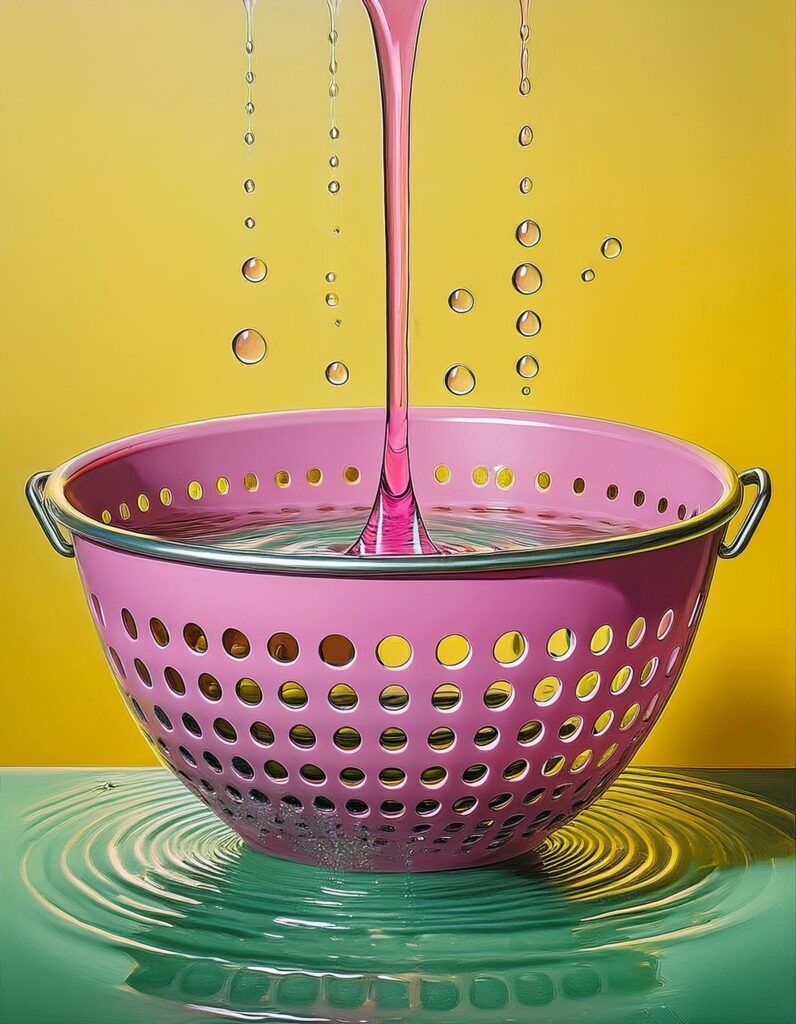The Strainer’s Secret: Unveiling Science in the Kitchen
Welcome to a world where everyday kitchen items become the key to unlocking the mysteries of science! Today, we’re diving into a fascinating experiment that turns a simple strainer into a scientific wonder. This activity is not just a fun way to spend an afternoon with your kids, but it’s also a brilliant introduction to the principles of surface tension and hydrophobic interactions.
Imagine a strainer, typically used to separate solids from liquids, defying the very rules it was designed to follow. In this experiment, we’ll see how a strainer can hold water without letting a single drop escape. Intrigued?
This experiment is a playful demonstration of surface tension, the cohesive force between liquid molecules that creates a ‘skin’ on the water’s surface, strong enough to support the weight of the water within the strainer. But why doesn’t the oil just slip away, allowing the water to escape? This is where hydrophobic interactions come into play. The oil, which repels water, strengthens the surface tension effect by preventing the water from adhering to the strainer’s holes.
Now, let’s talk science. This experiment falls under the fascinating branch of physical chemistry, specifically the study of intermolecular forces. Surface tension is a physical property resulting from the cohesive forces between liquid molecules at the interface between liquid and gas. These forces are responsible for the bead-like shape of water droplets and the ability of some insects to walk on water. In our strainer experiment, we witness these forces in action, providing a tangible example of abstract scientific concepts.
For those eager to try this experiment but lacking the exact materials, fear not! Substitutions are readily available in your home:
Instead of cooking oil, try using any type of oil, like olive or vegetable oil. No small strainer? A tea infuser or even a slotted spoon can work in a pinch. If you don’t have a glass, any small container will do, and for the bowl, any larger container that can hold the water and strainer will suffice.
This experiment is perfect for children aged 7 and up, with adult supervision ensuring safety and enhancing the learning experience. Preparation takes mere minutes, and the results are immediate, providing instant gratification and a sense of accomplishment. The entire activity, from setup to completion, can be done in under 30 minutes, making it an ideal educational break that fits easily into a busy day.
So, gather your young scientists, embrace the curiosity, and prepare for a splash of science that will leave everyone amazed!

Stop A Strainer
Ingredients
INSTRUCTIONS
-
Click here for the full experiment details. Checkout the main website: Science Fun for Everyone!
-
Get experimenting!
-
Feed your knowledge.
-
Come back for more recipes for science!






